XL. Fausto & Felice Niccolini. Houses and Monuments of Pompeii 275638
-
ISBN9783836556873
-
Бренд
-
Автор
-
Рік2016
-
МоваАнглійська, Французька, Німецька
-
ІлюстраціїКольорові
-
ЖанрОбразотворче мистецтво, Культура та мистецтво, Історія мистецтв
The first color lithographs of the rediscovered Pompeii
When the excavations at Pompeii were first placed on a scholarly archaeological footing in the 19th century, brothers Fausto and Felice Niccolini were close at hand and ready to respond. Making use of the newly introduced technique of color lithography, they documented the buildings, frescos, statues, as well as the most ordinary everyday objects, of the city buried in just 24 hours by the catastrophic eruption of Vesuvius and preserved for over 1,600 years under a mantle of volcanic ash.
The Niccolinis’ goal was to illustrate all aspects of life in the antique city. Their publication, Le case ed i monumenti di Pompei (“The Houses and Monuments of Pompeii”), which was issued in installments between 1854 and 1896 in Naples, presented over 400 color plates providing not only views, maps, and groundplans of the city and its public buildings, but also offered unprecedented access to Pompeii’s private residences. They revealed the astonishing painted wall decorations that adorned these long-buried abodes, their intricate works of art, and the practical utensils of everyday use, conjuring up a vivid picture of each house as a real domestic space. In total, the plates illustrated more than 1,000 items, each extensively specified and located for the first time, making the publication a major reference in Pompeii research. In addition, “animated” representations visualized daily life in Pompeii’s workshops, taverns, and shops, on its public squares, and in its temples, theaters, and baths.
This meticulous facsimile revives the Niccolinis’ extraordinary achievement with all color plates and two introductory essays setting the project in its contemporary context and presenting the historical protagonists of the Vesuvian excavations. In addition, we explore the remarkable influence exerted by Pompeian art—and by the haunting plaster casts made of victims of the eruption—on the visual arts. Across painting, sculpture, and interior design, we trace the Pompeii legacy in the work of Robert Adam, Anton Raphael Mengs, Angelika Kaufmann, Jean-Auguste-Dominique Ingres, Lawrence Alma-Tadema, Pablo Picasso, and Giorgio de Chirico, right through to recent masters Duane Hanson and George Segal.
Для використання функції «Покупка частинами» необхідно мати картку Monobank.
Розділивши оплату на певну кількість платежів (від 3 до 10),
ви платите лише одну частину. Решта – раз на місяць списуватиметься з вашої карти.
Послуга може бути використана при замовлення на суму від 600 грн.
Увага! При покупці частинами знижки на товари не враховуються.
Щоб скористатися цією функцією, додайте в кошик товарів на суму від 600 грн.
На сторінці оформлення замовлення вкажіть спосіб оплати «Покупка частинами Monobank». Підтвердьте покупку у програмі Monobank.
-
Нова ПоштаБезкоштовно від
3'000,00 ₴ -
УкрпоштаБезкоштовно від
1'000,00 ₴ -
Meest ПоштаБезкоштовно від
3'000,00 ₴
Характеристики
- Бренд
- Вага, г6160
- Автор
- КатегоріяХобі та захоплення
- Рік2016
- Сторінок648
- Формат285х395 мм
- ОбкладинкаТверда
- ОформленняСуперобкладинка
- Тип паперуКрейдований
- МоваАнглійськаФранцузькаНімецька
- ІлюстраціїКольорові
- ЖанрОбразотворче мистецтвоКультура та мистецтвоІсторія мистецтв
- Вік16+
«Fausto & Felice Niccolini. Houses and Monuments of Pompeii» — коли археологія перетворюється на поезію
Помпеї, застиглі в часі, стали вічним символом краси й катастрофи. Брати Фаусто та Феліче Нікколіні у XIX столітті створили унікальну візуальну енциклопедію міста, якого більше немає. Книга «Houses and Monuments of Pompeii» — це філігранне факсиміле старовинного видання, в якому кожна фреска, кожна колона, кожна вілла оживає у фарбах і деталях. Це не просто книга — це збережена пам’ять.
Кому буде цікава ця книга?
Це ідеальний вибір для археологів, істориків, архітекторів, митців і всіх, хто хоче купити книгу, що передає велич античного світу. Також вона стане вражаючим подарунком для тих, хто захоплюється культурою Стародавнього Риму й історією Італії.
Чому варто купити цю книгу?
- Понад 400 історичних ілюстрацій: акварелі, креслення, архітектурні плани Помпей.
- Точна репродукція унікального італійського видання XIX століття.
- Коментарі сучасних дослідників, історичні пояснення та контекст відкриттів.
- Видавництво TASCHEN — гарантія поліграфічної досконалості.
Замовте книгу, яка зберігає вічне
Бажаєте купити книгу Fausto & Felice Niccolini. Houses and Monuments of Pompeii? У нашому книжковому магазині — доставка книг по Україні, автентичні видання та можливість купити книгу видавництва, що поєднує знання і естетику.
Купіть книгу — і зануртесь у красу античності.
Помпеї чекають, щоб ожити для вас — сторінка за сторінкою.
Замовляйте просто зараз — доторкніться до безсмертного.
Від видавця
The first color lithographs of the rediscovered Pompeii
When the excavations at Pompeii were first placed on a scholarly archaeological footing in the 19th century, brothers Fausto and Felice Niccolini were close at hand and ready to respond. Making use of the newly introduced technique of color lithography, they documented the buildings, frescos, statues, as well as the most ordinary everyday objects, of the city buried in just 24 hours by the catastrophic eruption of Vesuvius and preserved for over 1,600 years under a mantle of volcanic ash.
The Niccolinis’ goal was to illustrate all aspects of life in the antique city. Their publication, Le case ed i monumenti di Pompei (“The Houses and Monuments of Pompeii”), which was issued in installments between 1854 and 1896 in Naples, presented over 400 color plates providing not only views, maps, and groundplans of the city and its public buildings, but also offered unprecedented access to Pompeii’s private residences. They revealed the astonishing painted wall decorations that adorned these long-buried abodes, their intricate works of art, and the practical utensils of everyday use, conjuring up a vivid picture of each house as a real domestic space. In total, the plates illustrated more than 1,000 items, each extensively specified and located for the first time, making the publication a major reference in Pompeii research. In addition, “animated” representations visualized daily life in Pompeii’s workshops, taverns, and shops, on its public squares, and in its temples, theaters, and baths.
This meticulous facsimile revives the Niccolinis’ extraordinary achievement with all color plates and two introductory essays setting the project in its contemporary context and presenting the historical protagonists of the Vesuvian excavations. In addition, we explore the remarkable influence exerted by Pompeian art—and by the haunting plaster casts made of victims of the eruption—on the visual arts. Across painting, sculpture, and interior design, we trace the Pompeii legacy in the work of Robert Adam, Anton Raphael Mengs, Angelika Kaufmann, Jean-Auguste-Dominique Ingres, Lawrence Alma-Tadema, Pablo Picasso, and Giorgio de Chirico, right through to recent masters Duane Hanson and George Segal.
Зміст





















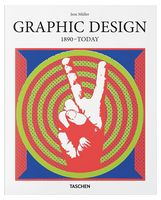
















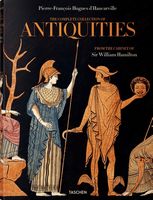


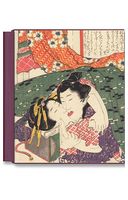
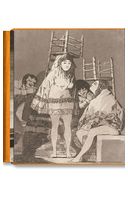


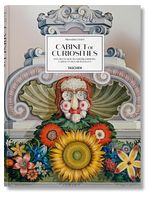












Відгуки про XL. Fausto & Felice Niccolini. Houses and Monuments of Pompeii